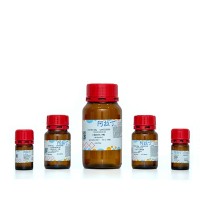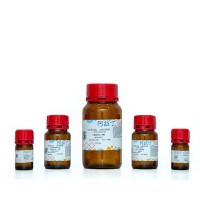Phylogenetic Analysis with the iPlant Discovery Environment
互联网
- Abstract
- Table of Contents
- Figures
- Literature Cited
Abstract
The iPlant Collaborative's Discovery Environment is a unified Web portal to many bioinformatics applications and analytical workflows, including various methods of phylogenetic analysis. This unit describes example protocols for phylogenetic analyses, starting at sequence retrieval from the GenBank sequence database, through to multiple sequence alignment inference and visualization of phylogenetic trees. Methods for extracting smaller sub?trees from very large phylogenies, and the comparative method of continuous ancestral character state reconstruction based on observed morphology of extant species related to their phylogenetic relationships, are also presented. Curr. Protoc. Bioinform. 42:6.13.1?6.13.13. © 2013 by John Wiley & Sons, Inc.
Keywords: phylogenetics; maximum likelihood; continuous ancestral character estimation; multiple sequence alignment
Table of Contents
- Introduction
- Basic Protocol 1: Building a Phylogenetic Tree Using Sequence Similarity
- Alternate Protocol 1: Extracting Subtrees from a “Tree of Life”
- Basic Protocol 2: Ancestral Character State Reconstuction for Continuous Traits
- Support Protocol 1: Example File Download
- Commentary
- Literature Cited
- Figures
- Tables
Materials
Figures
-
Figure 6.13.1 Layout of the Discovery Environment with Data, Analyses, and App windows as well as the notification area (E ) open in the main window (A ). Icons (B ) are used to open the corresponding windows. The toolbar of the Data window contains icons to perform folder options (C , from left to right: data import, create folder, rename folder, delete folder) and file actions (D ). View Image -
Figure 6.13.2 Launch Analysis dialog for the NCBI GenBank Import App in front of the Apps and the App windows. View Image -
Figure 6.13.3 Data window showing the output folder of the campanulaceae_sequences analysis and the output file sequences.fa selected and ready to be downloaded. In the background the Analysis window is visible. View Image -
Figure 6.13.4 The reference tree used in the alternative protocol in the custom tree viewer. In the background, the preview window showing the URL (http://portnoy.iplantcollaborative.org/view/tree/af0a396ae577e4fab09613867b30183e). View Image -
Figure 6.13.5 A plot of inferred ancestral character states for lobeliod heights. Plant heights are represented using colors (see key in upper left). Extant taxa at the far right show measured heights, while internal, numbered nodes in the tree show inferred ancestral heights. View Image
Videos
Literature Cited
| Ackerly, D. 2009. Colloquium Papers: Conservatism and diversification of plant functional traits: Evolutionary rates versus phylogenetic signal. Proc. Natl. Acad. Sci. U.S.A. 106:19699‐19706. | |
| Altschul, S.F., Madden, T.L., Schaffer, A.A., Zhang, J., Zhang, Z., Miller, W., and Lipman, D.J. 1997. Gapped BLAST and PSI‐BLAST: A new generation of protein database search programs. Nucleic Acids Res. 25:3389‐3402. | |
| Benson, D.A., Karsch‐Mizrachi, I., Lipman, D.J., Ostell, J., and Sayers, E.W. 2011. GenBank. Nucleic Acids Res. 39:D32‐D37. | |
| Delsuc, F., Brinkmann, H., and Philippe, H. 2005. Phylogenomics and the reconstruction of the tree of life. Nature Rev. Genet. 6:361‐375. | |
| Edgar, R.C. 2004. MUSCLE: Multiple sequence alignment with high accuracy and high throughput. Nucleic Acids Res. 32:1792‐1797. | |
| Goff, S.A., Vaughn, M., McKay, S., Lyons, E., Stapleton, A.E., Gessler, D., Matasci, N., Wang, L., Hanlon, M., Lenards, A., Muir, A., Merchant, N., Lowry, S., Mock, S., Helmke, M., Kubach, A., Narro, M., Hopkins, N., Micklos, D., Hilgert, U., Gonzales, M., Jordan, C., Skidmore, E., Dooley, R., Cazes, J., McLay, R., Lu, Z., Pasternak, S., Koesterke, L., Piel, W.H., Grene, R., Noutsos, C., Gendler, K., Feng, X., Tang, C., Lent, M., Kim, S.J., Kvilekval, K., Manjunath, B.S., Tannen, V., Stamatakis, A., Sanderson, M., Welch, S.M., Cranston, K.A., Soltis, P., Soltis, D., O'Meara, B., Ane, C., Brutnell, T., Kleibenstein, D.J., White, J.W., Leebens‐Mack, J., Donoghue, M.J., Spalding, E.P., Vision, T.J., Myers, C.R., Lowenthal, D., Enquist, B.J., Boyle, B., Akoglu, A., Andrews, G., Ram, S., Ware, D., Stein, L., and Stanzione, D. 2011. The iPlant collaborative: Cyberinfrastructure for plant biology. Front. Plant Sci. 2:34. | |
| Larkin, M.A., Blackshields, G., Brown, N.P., Chenna, R., McGettigan, P.A., McWilliam, H., Valentin, F., Wallace, I.M., Wilm, A., Lopez, R., Thompson, J.D., Gibson, T.J., and Higgins, D.G. 2007. Clustal W and Clustal X version 2.0. Bioinformatics 23:2947‐2948. | |
| Paradis, E., Claude, J., and Strimmer, K. 2004. APE: Analyses of Phylogenetics and Evolution in R language. Bioinformatics 20:289‐290. | |
| Smith, S.A., Beaulieu, J.M., Stamatakis, A., and Donoghue, M.J. 2011. Understanding angiosperm diversification using small and large phylogenetic trees. Am. J. Botany 98:404‐414. | |
| Stamatakis, A., Aberer, A.J., Goll, C., Smith, S.A., Berger, S.A., and Izquierdo‐Carrasco, F. 2012. RAxML‐Light: A tool for computing terabyte phylogenies. Bioinformatics 28:2064‐2066. | |
| Stoltzfus, A., O'Meara, B., Whitacre, J., Mounce, R., Gillespie, E.L., Kumar, S., Rosauer, D.F., and Vos, R.A. 2012. Sharing and re‐use of phylogenetic trees (and associated data) to facilitate synthesis. BMC Res. Notes 5:574. | |
| Stoltzfus, A., Lapp, H., Matasci, N., Deus, H., Sidlauskas, B., Zmasek, C.M., Vaidya, G., Pontelli, E., Cranston, K., Vos, R.A., et al. Phylotastic! Making tree‐of‐life knowledge accessible, reusable and convenient. BMC Bioinformatics. In press. | |
| Wheeler, T. 2009. Large‐scale neighbor‐joining with NINJA. In Algorithms in Bioinformatics (S. Salzberg and T. Warnow, eds.) pp. 375‐389. Springer, Berlin. | |
| Key Reference | |
| Goff et al., 2011. See above. | |
| Provides a complete overview of the iPlant Collaborative project. | |
| Internet Resources | |
| http://www.iplantcollaborative.org | |
| iPlant Home page. | |
| http://de.iplantcollaborative.org | |
| iPlant Discovery Environment. | |
| http://www.ncbi.nlm.nih.gov/genbank | |
| NCBI GenBank sequence repository. | |
| http://www.drive5.com/muscle | |
| MUSCLE Home page. | |
| http://www.exelixis‐lab.org | |
| RAxML Home page. |







